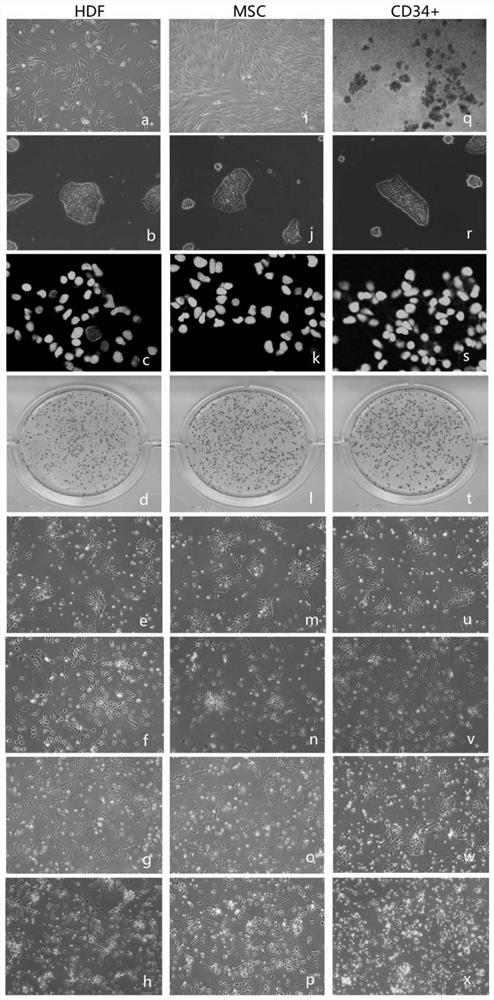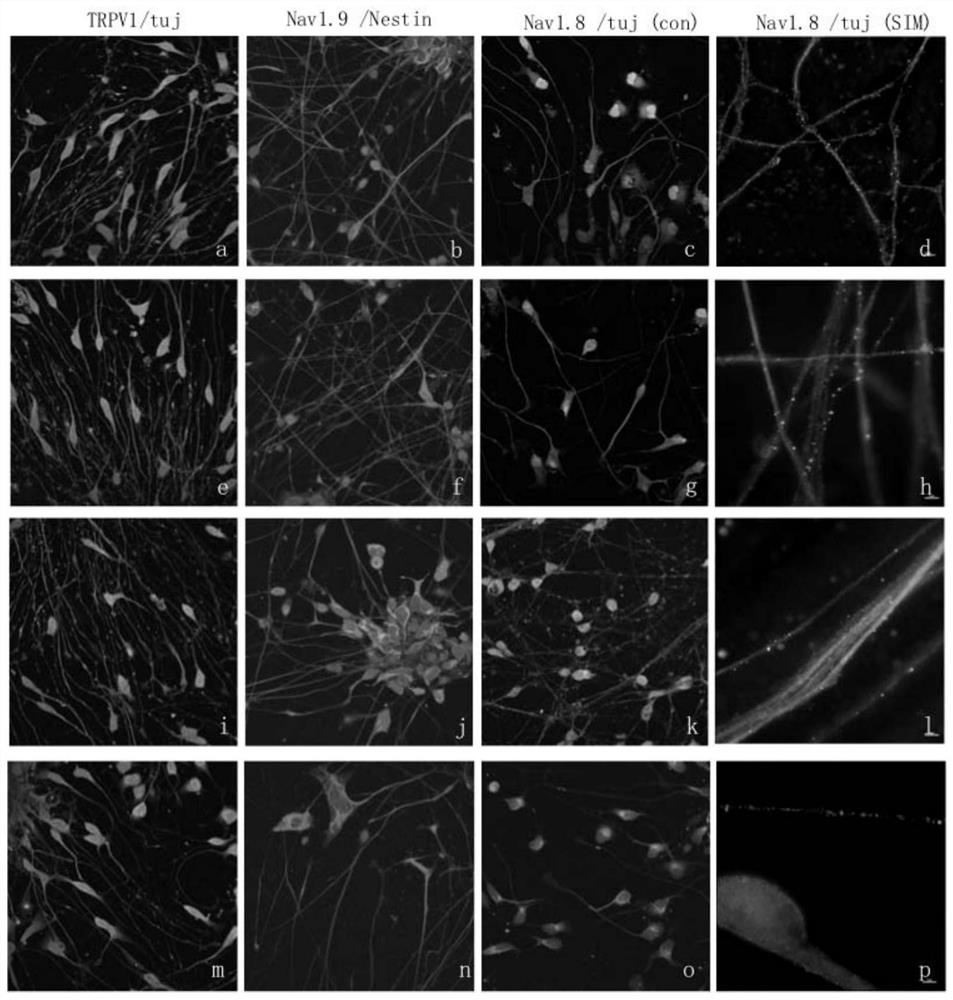Serum-free induction method of sensory neuronal cells
A neuron cell, sensory nerve technology, applied in nervous system cells, animal cells, nervous system diseases, etc., can solve problems affecting cell purity, drug screening interference, etc.
- Summary
- Abstract
- Description
- Claims
- Application Information
AI Technical Summary
Problems solved by technology
Method used
Image
Examples
Embodiment 1
[0055] Example 1. Preparation of human induced pluripotent stem cells
[0056] Matrigel (STEMCELL Technologies) was used to coat the 6-well culture plate, and after plating, it was placed in a 37°C incubator and incubated for more than one hour. When somatic cell reprogramming was performed using the Epi5 Reprogramming Kit (Invitrogen), the following human adult cells were reprogrammed into induced pluripotent stem cells using the Neon Electroporation Kit (Thermo Fisher): Human mesenchymal cells (Lonza, PT-2501) , human CD34+ cells (PromoCELL, c-12921), and human skin fibroblasts (PromoCELL, c-12302).
[0057] The operation steps are as follows: after centrifugation and washing, the human adult cells were resuspended in the resuspension buffer provided in the electroporation kit, and the electroporation was performed according to the following procedure: 1650V pulse voltage, 10ms pulse width, 3 pulses. After the electroporation, the cells were poured into a tube of 6ml reprog...
Embodiment 2
[0059] Example 2. Counting of induced pluripotent stem cell clones and identification of pluripotency
[0060] (2.1) Alkaline phosphatase staining (Cat#SCR004, Millipore) was used to count induced pluripotent stem cell clones and identify pluripotency. First, remove the cell culture medium in the culture dish, wash it with PBS, add 4% paraformaldehyde to fix it for 1-2 minutes, wash it with TBST three times, and add the staining working solution provided by the kit (taking a 24-well plate as an example) , add 0.5m1 to each well), and place in the dark at room temperature for 15-20min; after staining, the staining solution was sucked away, washed 2-3 times with phosphate buffer, and the staining results were observed under a microscope (DMi8, Leica).
[0061] (2.2) Immunofluorescence identification of Oct3 / 4 induced pluripotent stem cells was performed using fluorescence immunofluorescence.
[0062] The induced pluripotent stem cells in Example 1 were taken and identified by i...
Embodiment 3
[0066] Example 3. Sensory neuron differentiation of induced pluripotent stem cells (3.1) Induction of sensory neural precursor cells
[0067] Matrigel (STEMCELL Technologies) was used to coat T25 cell culture flasks, and placed in a 37°C incubator for more than one hour after plating. A variety of human induced pluripotent stem cells from different sources obtained in Example 1 according to 1x10 6 Cells were seeded in T25 culture flasks.
[0068] When the induced pluripotent stem cells reached 70% coverage, they were digested with 0.05% trypsin / EDTA at 37°C for 5 minutes, and the cell digestion was terminated with DMEM. Cells were washed and centrifuged according to 2×10 5 The proportion of each bottle was re-seeded in T25 culture plate, and cultured with sensory neuron induction medium, the culture condition was 37°C, 5% CO 2 (Panasonic, MCO-18AC) were cultured for 10 days until a neural plate was formed, and the formation of sensory nerve precursor cells was confirmed.
...
PUM
 Login to View More
Login to View More Abstract
Description
Claims
Application Information
 Login to View More
Login to View More - R&D
- Intellectual Property
- Life Sciences
- Materials
- Tech Scout
- Unparalleled Data Quality
- Higher Quality Content
- 60% Fewer Hallucinations
Browse by: Latest US Patents, China's latest patents, Technical Efficacy Thesaurus, Application Domain, Technology Topic, Popular Technical Reports.
© 2025 PatSnap. All rights reserved.Legal|Privacy policy|Modern Slavery Act Transparency Statement|Sitemap|About US| Contact US: help@patsnap.com



